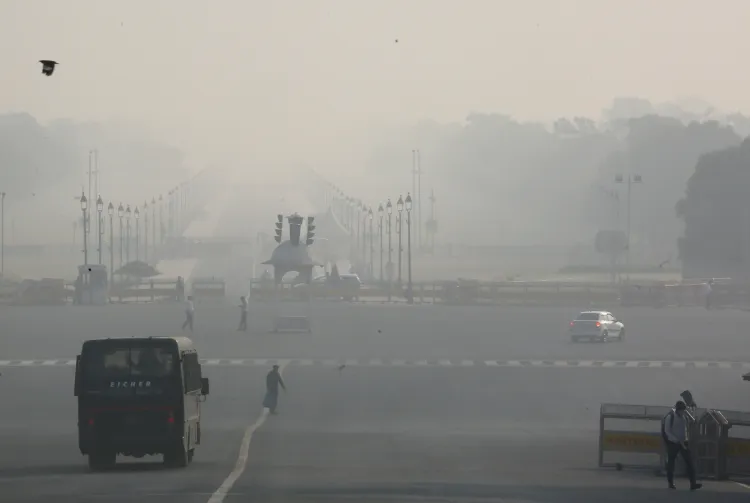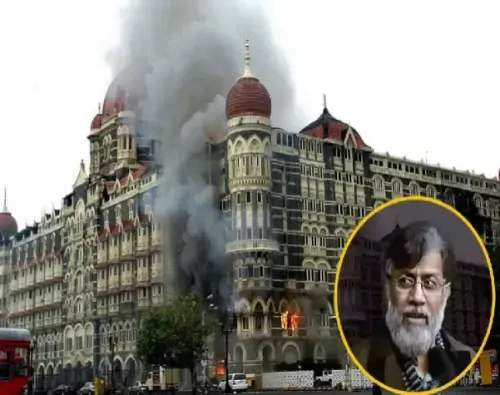Is Delhi's Air Quality Getting Worse with Fog and Smog?

Synopsis
Key Takeaways
- Delhi's air quality remains critical with AQI around 337.
- Fog and smog are significantly affecting visibility and health.
- 34 out of 39 monitoring stations report very poor air quality.
- Key pollution hotspots include Rohini, Anand Vihar, and ITO.
- Authorities predict continued poor air quality in the coming days.
New Delhi, Nov 26 (NationPress) A delicate layer of fog enveloped India Gate and Kartavya Path around 7:40 a.m., resulting in reduced visibility, while the Air Quality Index (AQI) lingered around 350, indicating very poor air quality.
In the early hours, a thick veil of smog shrouded the foot overbridge at ITO, with the AQI again nearing 350, highlighting dangerous conditions for central Delhi's morning commuters.
Data from the Central Pollution Control Board (CPCB) revealed that Delhi's overall AQI was recorded at 337, showing only a slight improvement from Tuesday. Out of 39 monitoring stations within the national capital, 34 reported 'very poor' air quality, while five stations indicated pollution levels categorized as 'poor.'
Several pollution hotspots continued to suffer from hazardous air early in the day. At 7 a.m., Rohini reported an AQI of 376, with other severely affected areas including Delhi Technological University (367), Anand Vihar (364), Bawana (382), Ashok Vihar (364), Burari (347), Alipur (344), ITO (360), and Dwarka (361) — all firmly within the very poor range.
In the broader NCR region, Noida was also grappling with persistently polluted air. Key stations reported very poor air quality, such as Sector 1 (355), Sector 62 (304), Sector 116 (372), and Sector 125 (399), the latter nearing the 'severe' category.
The Air Quality Early Warning System for Delhi has anticipated that pollution levels are expected to remain in the very poor range from November 26 to 28, with conditions likely oscillating between severe and very poor over the coming six days.
Historical data from the CPCB indicates that Delhi's average AQI has consistently remained hazardous over the past week: 391 (Sunday), 370 (Saturday), 374 (Friday), 391 (Thursday), 392 (Wednesday), 374 (Tuesday), and 351 (Monday).
Meanwhile, the India Meteorological Department (IMD) has forecasted moderate fog on Wednesday, with temperatures expected to range around 24 degrees Celsius (maximum) and 9 degrees Celsius (minimum).









